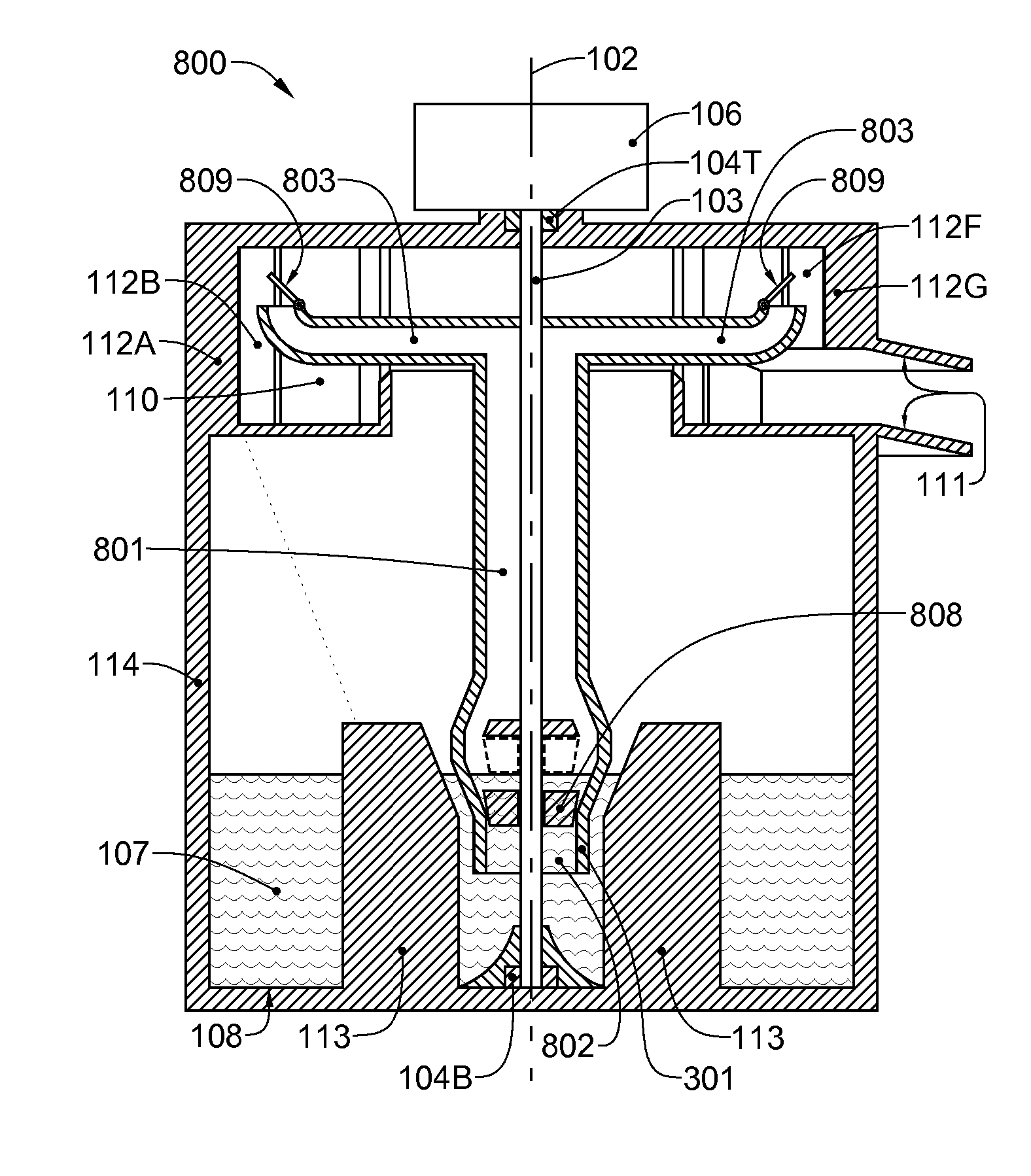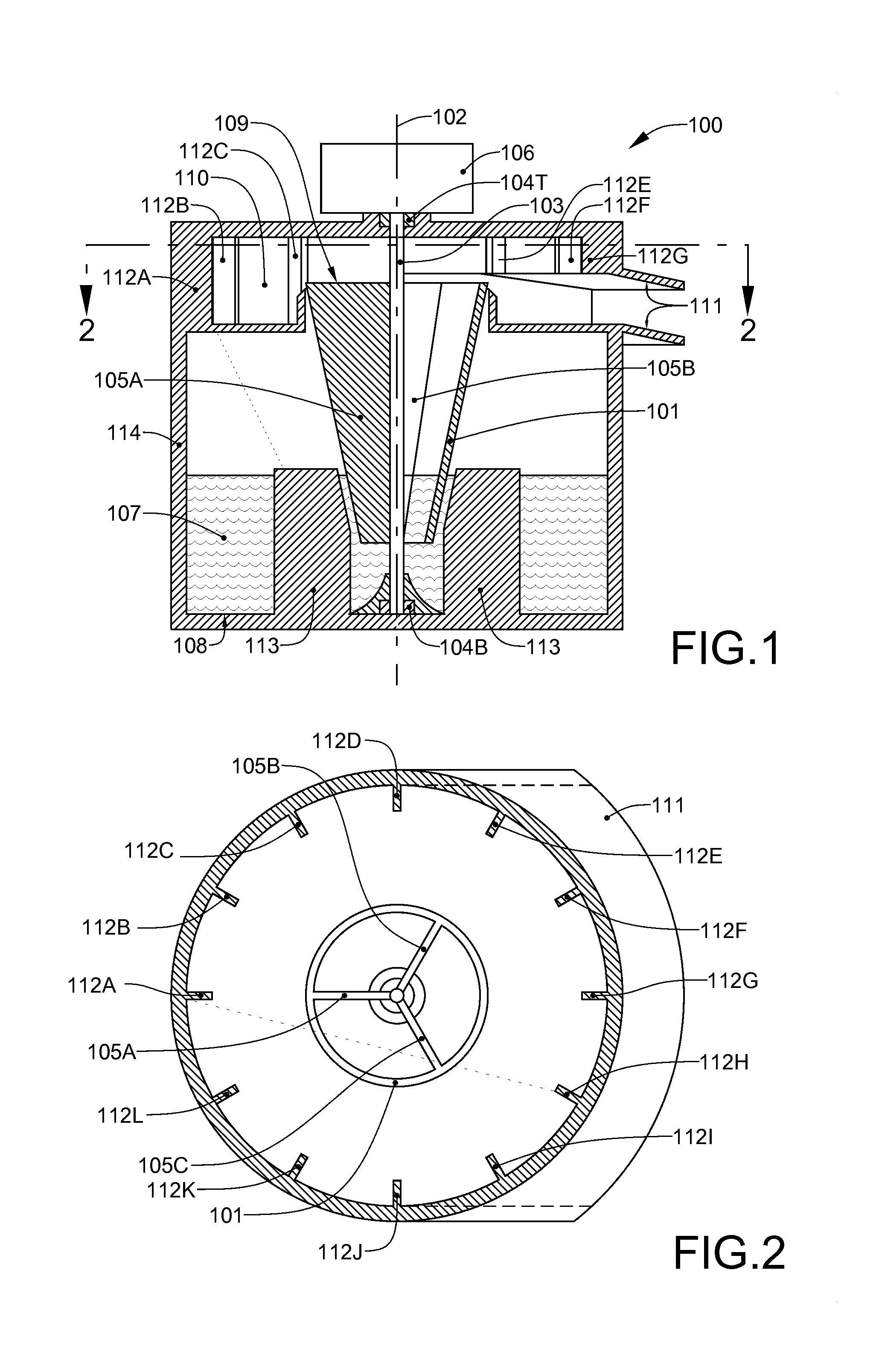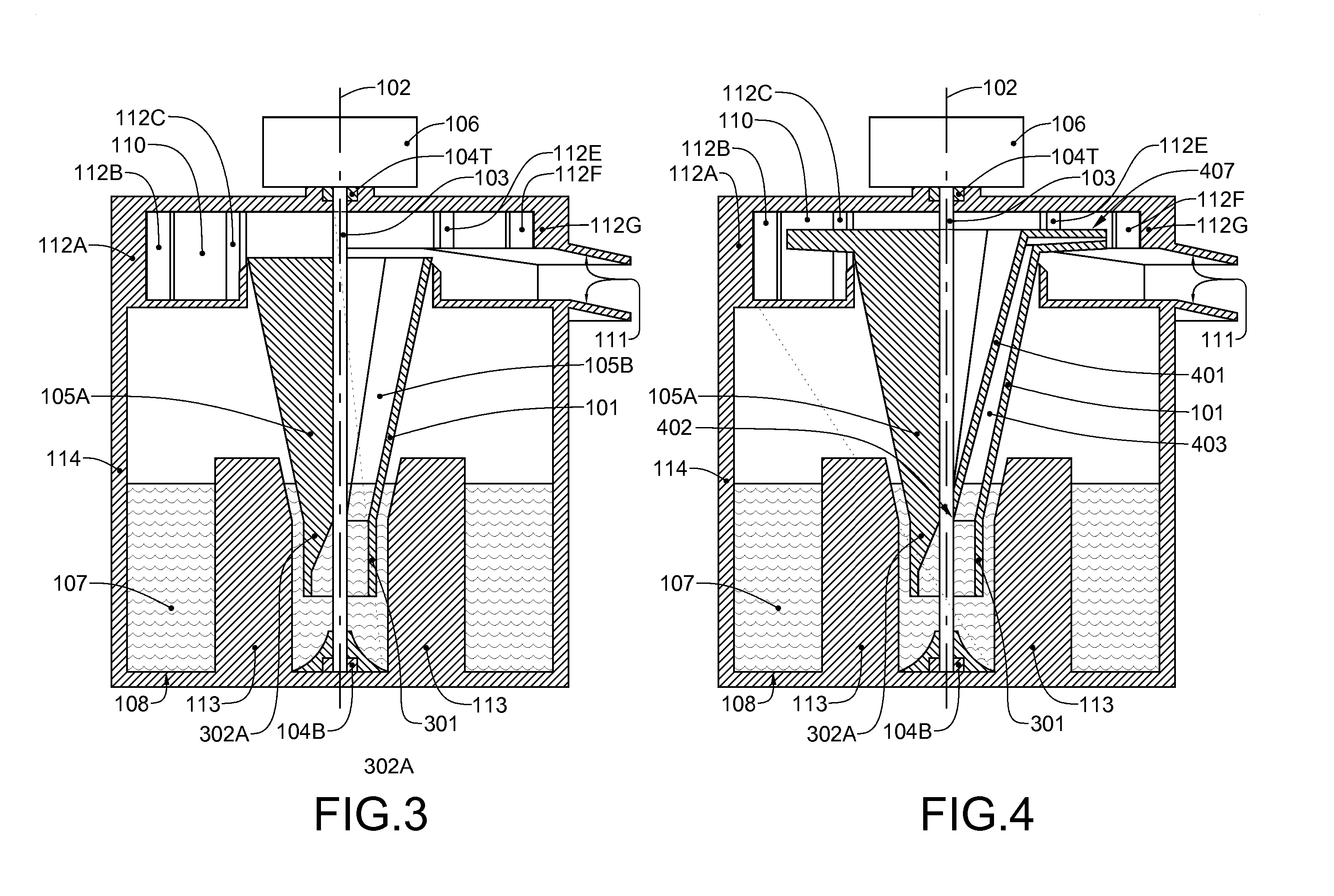Vertically-oriented centrifugal pump
- Summary
- Abstract
- Description
- Claims
- Application Information
AI Technical Summary
Benefits of technology
Problems solved by technology
Method used
Image
Examples
embodiment 100
[0032] Referring now to FIGS. 1 and 2, a first primary embodiment 100 of the new centrifugal pump includes a truncated right conical member (also known as a funnel) 101 rotating about its central vertical axis 102, through which is installed a drive shaft 103. At least one and, preferably, multiple, generally vertical partitions 105A, 105B and 105C are affixed to the inner wall of the funnel. An electric motor 106 or engine applies rotational torque to the drive shaft 103. As the funnel 101 rotates, fluid 107 residing in the sump 108 enters the bottom of the funnel and begins to rotate. As it rotates, it climbs the inner wall of the funnel 101 and is expelled at the top 109 of the funnel 101 into a catch chamber 110, from whence it exits through a discharge chute 111. A circular array of baffle plates 112A-112L may be positioned around the catch chamber 110 to prevent expelled fluid from spinning therein. In addition, a plurality of anti-vortex baffles 113 are positioned within the ...
embodiment 800
[0039] Referring now to FIG. 8, a third primary embodiment 800 of the new centrifugal pump, which relies entirely on siphoning action to raise the fluid, has a central vertical tube 801 open at a bottom end 802 thereof. The central vertical tube is capped with two or more rotationally balanced horizontal tubes 803, which radiate from the axis of the central vertical tube 801. Each horizontal tube terminates in a 90-degree elbow 804 that is upwardly angled. Alternatively, the horizontal tubes 803 may be replaced with ramped tubes (not shown), that are ramped at least about the diameter thereof. The assembly comprising the vertical tube 801, the horizontal tubes 803 and the 90-degree elbows 804 rotates about the vertical central axis 102 of the vertical tube 801. Fluid 107 being expelled through the horizontal tubes 803 as the assembly spins draws fluid up the central vertical tube 801. This third primary embodiment pump 800 must be primed in order for the pumping action to begin. Thi...
PUM
 Login to View More
Login to View More Abstract
Description
Claims
Application Information
 Login to View More
Login to View More - R&D
- Intellectual Property
- Life Sciences
- Materials
- Tech Scout
- Unparalleled Data Quality
- Higher Quality Content
- 60% Fewer Hallucinations
Browse by: Latest US Patents, China's latest patents, Technical Efficacy Thesaurus, Application Domain, Technology Topic, Popular Technical Reports.
© 2025 PatSnap. All rights reserved.Legal|Privacy policy|Modern Slavery Act Transparency Statement|Sitemap|About US| Contact US: help@patsnap.com



